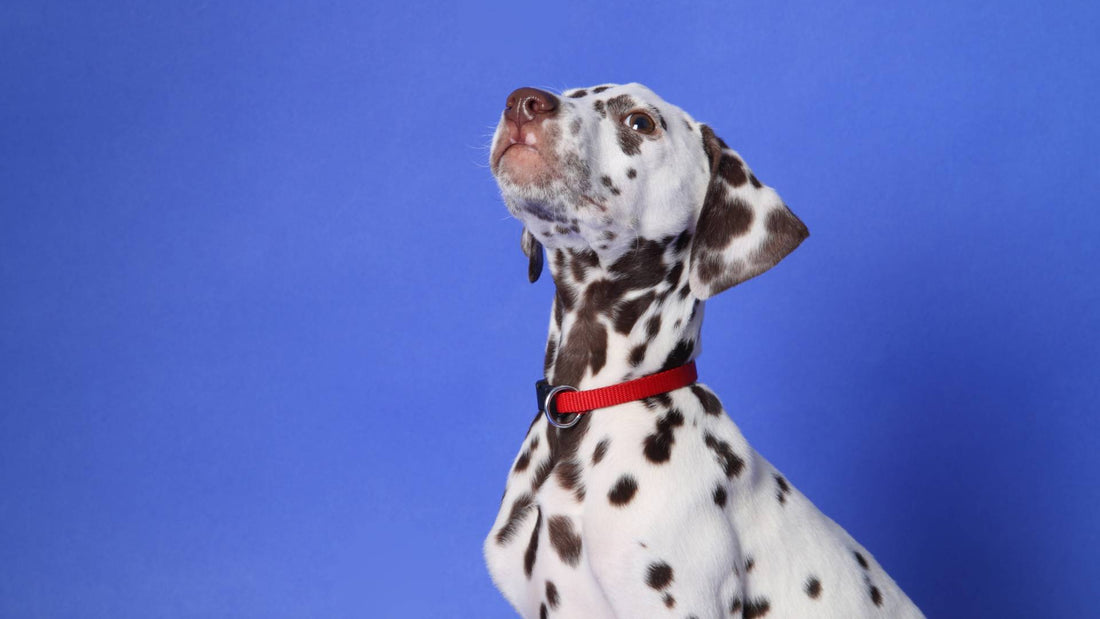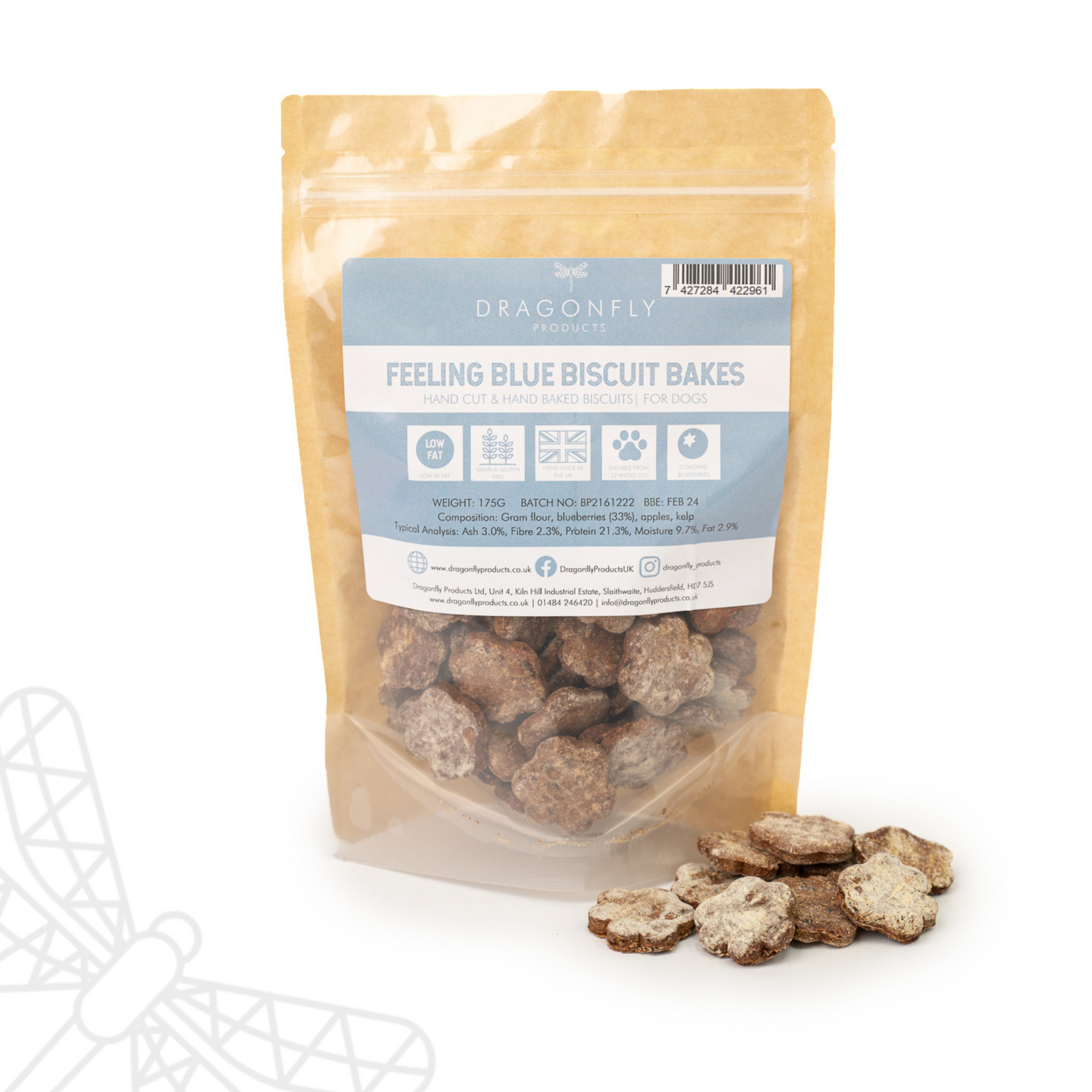
What is a Low Purine Diet for Dogs?
Purine is an essential compound found in the cells of both plants and animals. While it is important for various bodily functions, excessive purine intake can lead to health issues in certain individuals, including dogs. In this article, we will explore what a low purine diet entails, what purine is, and why dogs may require such a diet. We'll also address some common questions related to purine and its effects on our canine companions.
"A carefully planned low purine diet can be an effective approach for managing purine-related health conditions in dogs. By selecting appropriate ingredients and balancing the nutritional profile, we can help reduce the risk of urate crystal formation and support overall urinary tract health. Consulting with a canine nutritionist can provide valuable guidance in formulating a well-rounded low purine diet that meets your dog's specific dietary needs." - Laura Lambert, Dragonfly Products
Table of Contents
- What is purine?
- The Purine Metabolism Process
- The Significance of a Low purine diet for dogs
- Which dog breeds are more susceptible to purine-related health issues?
- Why are purines such a problem for dalmatians?
- How does purine affect dogs' health?
- What are the symptoms of excessive purine levels in dogs?
- Implementing a low purine diet for your dog
- Which dog treats are suitable for a low purine diet?
What is purine?
Purine is a nitrogenous compound that plays a crucial role in the production of DNA, RNA, and ATP (adenosine triphosphate) within the body. It is naturally present in various foods, including meats, seafood, legumes, and certain vegetables. When dogs consume food containing purine, their bodies break it down into uric acid.
The Purine Metabolism Process
When dogs consume food containing purine, their bodies break it down through a series of complex biochemical reactions. The key enzymes involved in purine metabolism are xanthine oxidase and adenosine deaminase. These enzymes facilitate the conversion of purine to uric acid, a waste product that is then excreted through the urine.
The process begins with the breakdown of dietary purines into simpler compounds, including hypoxanthine and guanine. These compounds are further converted into xanthine, which is then metabolised to uric acid. Under normal circumstances, dogs efficiently eliminate uric acid from their bodies, maintaining balanced purine levels.
The significance of a low purine diet for dogs
While purine is an essential component for bodily functions, some dogs are unable to efficiently metabolize and eliminate excess uric acid. This can lead to the formation of urate crystals or stones in the urinary tract, causing discomfort and potentially leading to more serious conditions such as urinary tract infections or even kidney stones.
A low purine diet is often recommended for dogs with conditions such as hyperuricosuria, urolithiasis, or certain types of liver diseases. By reducing the intake of purine-rich foods, the production of uric acid can be minimized, reducing the risk of these health issues.
Which dog breeds are more susceptible to purine-related health issues?
Certain dog breeds have a genetic predisposition to difficulties in purine metabolism. Breeds such as Dalmatians, Bulldogs, and English Setters are more commonly affected by purine-related health issues. However, it's essential to remember that individual susceptibility may vary, and any dog can develop problems with excessive purine levels.
Why are purines such a problem for Dalmatians?
Dalmatians, a distinctive and beloved breed, face a unique challenge when it comes to purines. These beautiful dogs carry a genetic mutation that affects their ability to metabolise and excrete purines, making them more susceptible to certain health issues. This mutation is specific to the Dalmatian breed and has been recognized for nearly a century, likely resulting from unintentional breeding efforts to create more distinctive spotting patterns.
The key consequence of this gene mutation is elevated levels of uric acid in all Dalmatians, with some individuals experiencing the formation of bladder stones. While other dog breeds can also encounter similar problems related to purine metabolism, Dalmatians are particularly affected by this issue.
It's important to note that while virtually every Dalmatian lacks the ability to convert uric acid into allantoin, which is then excreted in the urine, not all Dalmatians will develop urate stones. The development of stones depends on various factors, and not every Dalmatian will be affected in the same way.
While there is no definitive data on the exact percentage of affected Dalmatians, it is estimated that around one-third of male Dalmatians may develop urate stones. In comparison, female Dalmatians are at a lower risk due to their wider urethra, which allows smaller stones to pass undetected.
It's essential for Dalmatian owners and breeders to be aware of these unique considerations related to purine metabolism. Regular veterinary check-ups, a balanced diet, and appropriate monitoring can help mitigate the risk of urate stone formation and ensure the well-being of these remarkable dogs.
How does purine affect dogs' health?
Excessive purine consumption can lead to the accumulation of uric acid in dogs' bodies. If their ability to metabolise uric acid is compromised, it can result in the formation of crystals or stones in the urinary tract. These crystals can cause pain and discomfort during urination and, in severe cases, may lead to urinary tract infections or blockages.
What are the symptoms of excessive purine levels in dogs?
It's important for dog owners to be aware of the signs and symptoms that may indicate problems with purine metabolism in their pets. While the specific symptoms may vary depending on the individual dog and the severity of the condition, some common indicators of purine-related issues include:
- Frequent urination: Dogs may exhibit an increased need to urinate, often passing smaller amounts each time.
- Blood in the urine: The presence of blood in the urine may indicate irritation or damage to the urinary tract.
- Straining or discomfort during urination: Dogs may show signs of pain or discomfort while urinating.
- Abdominal discomfort: Dogs may exhibit signs of discomfort in the abdominal area, such as restlessness or reluctance to engage in certain activities.
- Urinary tract infections: Recurrent urinary tract infections may be a sign of underlying purine-related issues.
Implementing a low purine diet for your dog
When considering a low purine diet for your dog, you may with to consult with a veterinarian who can assess your dog's specific needs and provide appropriate guidance. However, there are some general tips for implementing a low purine diet.
- Choose Purine-Low Foods: Opt for dry dog food that is specifically formulated to be low in purine. Look for ingredients such as lean meats (chicken, turkey, beef and whitefish) and low-purine vegetables (carrots, peas). If you follow a raw feeding diet, choose high quality lean meats (cheaper raw food may use excessive poultry skin and fat), avoid completes that contain offal. We particularly recommend Manifold Valley Meats and Natural Instinct.
- Avoid High-Purine Foods: Restrict or eliminate foods known to be high in purine from your dog's diet. These may include organ meats (liver, kidneys), duck, venison, seafood (particularly oily fish), and legumes (beans, lentils).
- Provide Fresh Water: Encourage your dog to drink an ample amount of fresh water daily. This helps dilute the urine and promotes the excretion of uric acid.
- Monitor Progress: Regularly monitor your dog's health and consult with your veterinarian to assess the effectiveness of the low purine diet. Adjustments to the diet may be necessary based on your dog's response and any underlying conditions.
Which dog treats are suitable for a low purine diet?
There are a wide range of treats suitable for dogs following a low purine diet so your pup doesn't need to miss out. As a rule of thumb, opt for treats that are lower in oils and fats.
- Fish Jerky Mini Bites
- Fish Skin Thins
- Fish Jerky Bars
- Chicken Feet
- Chicken Necks
- Just Meat Strips – Turkey/Chicken
- Biscuit Bites – Banana, Apple & Blueberry
Understanding the significance of a low purine diet for dogs is essential for the well-being of our canine companions. By minimising the intake of purine-rich foods, we can help reduce the risk of purine-related health issues, such as urinary tract problems and kidney stones.
Please do speak to your vet for further advice and guidance. The above is a very general summary and may not be suited to individual dogs.
For any further help and advice please contact us on 01484 246420 and why not join our social media channels and online community on Instagram, Facebook or YouTube.
With Wags and Woofs,
Laura, Dolly & Reggie






